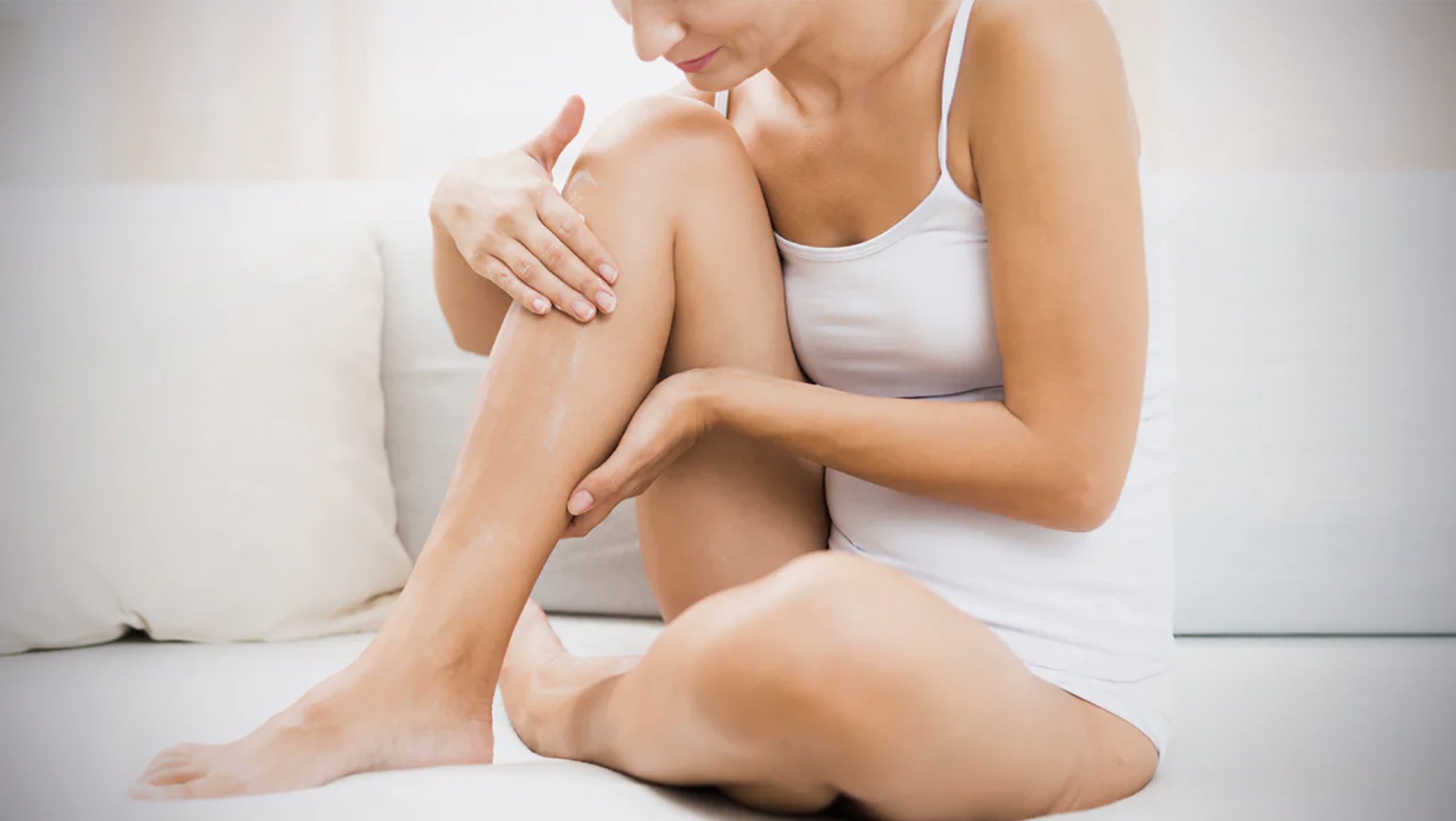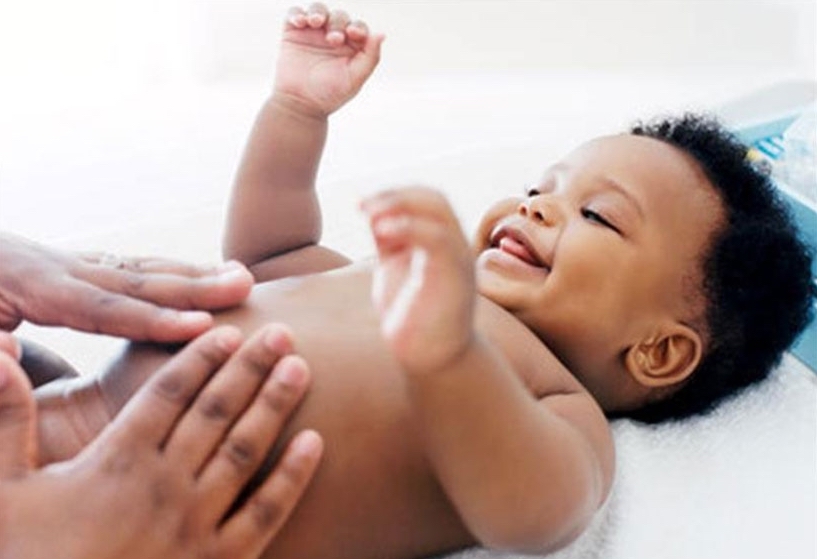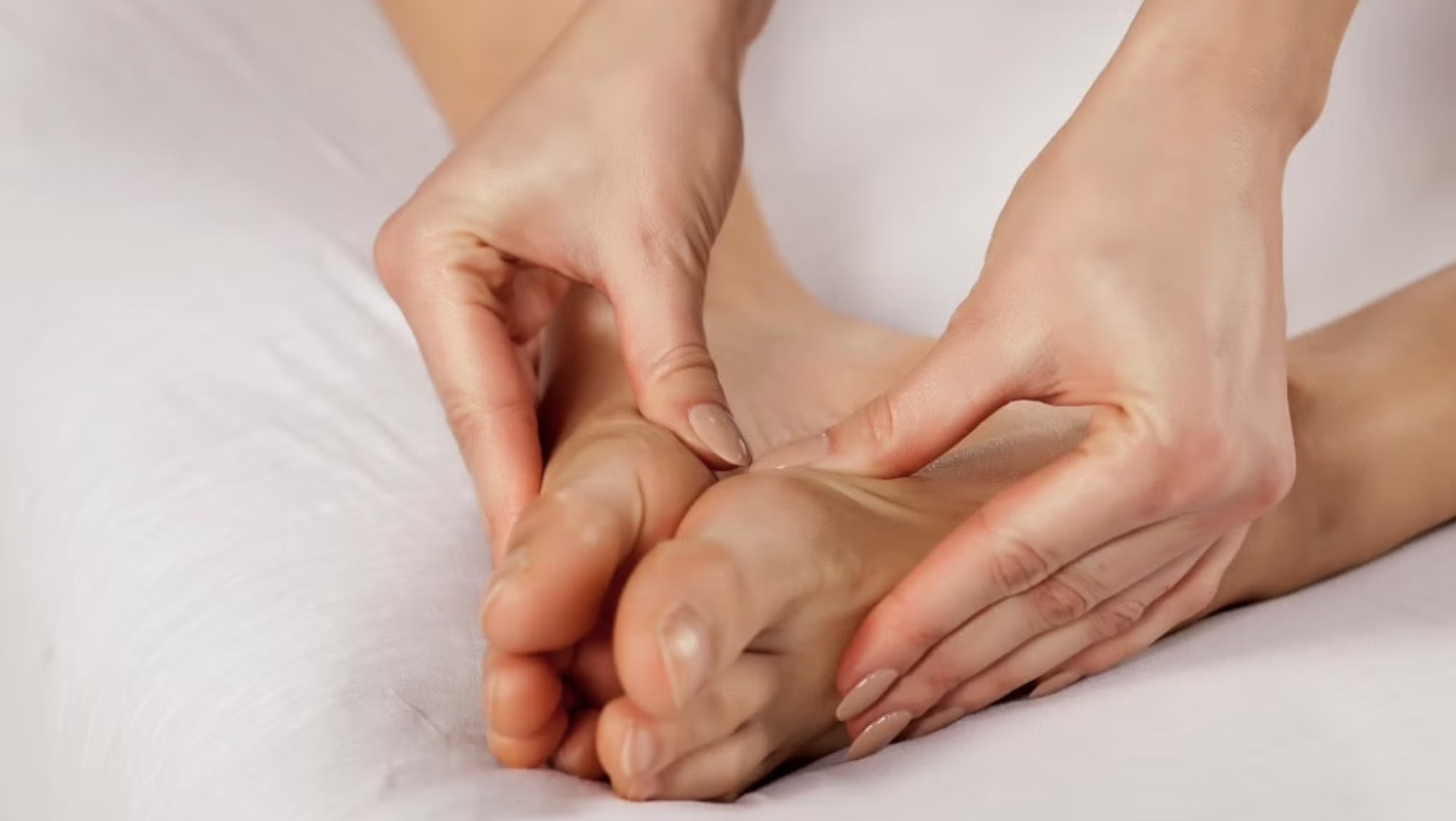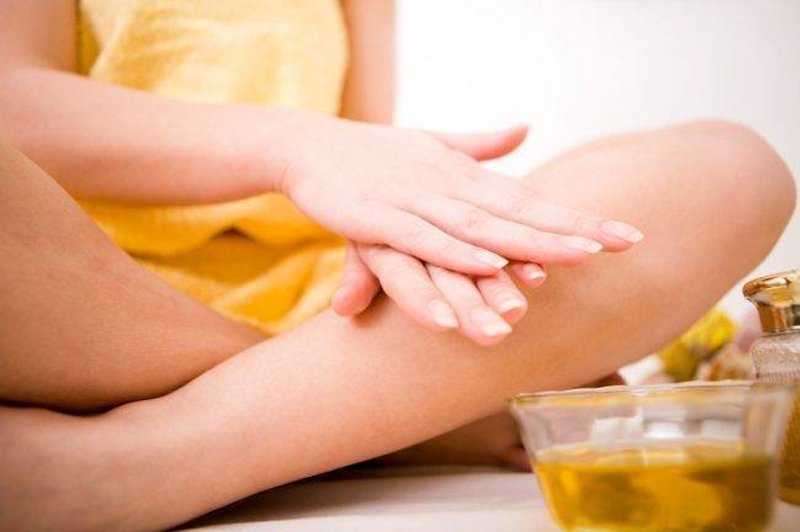
By Bryony Webster (Natural Physician Student)
Natural Physician student, Bryony Webster, wrote a lovely article on Abhyanga Self Massage for one of her free assignments, which I have shared here. Given the profound benefits of massage, and the expense of getting regular professional massages, learning the skills to practice self massage is well worth the effort. In Ayurveda it is suggested that Vata constitutions massage themselves 4-5 times a week, Pitta constitutions massage themselves 3-4 times a week and Kapha constitutions 2-3 times a week. Bryony has shared some of the oils to use for each constitution, as well as step-by-step instructions. Enjoy!
“The way to health is to have an aromatic bath and a scented massage every day” Hippocrates (Harper, 2020).
Massage has been a part of human existence for millennia and cultures all over the word have embraced its benefits and rituals to improve vitality and wellbeing. In Traditional Chinese Medicine and Egyptian culture, it has long been established that massage supports improved vitality and health concerns, giving “…relief to many ailments, including bloating, constipation, poor digestion, and flatulence” (Harper 2020). However, 2020 saw one of the biggest global changes to modern life in over a decade, with physical distancing guidelines and often a no touch policy. This article explores the meaningful impact of massage and how covid 19 effected wellbeing. It looks at what can be done to repair some of the effects of covid 19 through a traditional massage technique called Abhyanga massage. At the earliest moment in a human’s life, studies have linked touch to positive correlations in both mother and baby emotional and physical wellbeing. In Unicef’s Baby Friendly Initiative, they outline the importance of skin-to-skin contact between mother and child, stating “the mother will experience a surge of maternal hormones and begin to smell, stroke and engage with her baby. Babies’ instincts after birth will drive them to follow a unique process, which if left uninterrupted will result in them having a first breastfeed” (Unicef, 2015). One study showed that affectionate touch between mother and baby correlated with an “infant’s positive temperament influence, mother-infant affectionate touch patterns and resulted in neuroprotective outcomes for infants, even those exposed to maternal depression within early development” (Hardin et al, 2021). These findings have also been echoed in infant massage studies. As we develop into adulthood, neuroscientist Edmund Rolls studied how “…touch activates the brain’s orbitofrontal cortex, which is linked to feelings of reward and compassion…touch builds up cooperative relationships…touch signals safety and trust, it soothes. Basic warm touch calms cardiovascular stress. It activates the body’s vagus nerve, which is intimately involved with our compassionate response, and a simple touch can trigger release of oxytocin, aka “the love hormone” (Keltner, 2010).
At the earliest moment in a human’s life, studies have linked touch to positive correlations in both mother and baby emotional and physical wellbeing. In Unicef’s Baby Friendly Initiative, they outline the importance of skin-to-skin contact between mother and child, stating “the mother will experience a surge of maternal hormones and begin to smell, stroke and engage with her baby. Babies’ instincts after birth will drive them to follow a unique process, which if left uninterrupted will result in them having a first breastfeed” (Unicef, 2015). One study showed that affectionate touch between mother and baby correlated with an “infant’s positive temperament influence, mother-infant affectionate touch patterns and resulted in neuroprotective outcomes for infants, even those exposed to maternal depression within early development” (Hardin et al, 2021). These findings have also been echoed in infant massage studies. As we develop into adulthood, neuroscientist Edmund Rolls studied how “…touch activates the brain’s orbitofrontal cortex, which is linked to feelings of reward and compassion…touch builds up cooperative relationships…touch signals safety and trust, it soothes. Basic warm touch calms cardiovascular stress. It activates the body’s vagus nerve, which is intimately involved with our compassionate response, and a simple touch can trigger release of oxytocin, aka “the love hormone” (Keltner, 2010).
When we receive a massage the effects on chronic conditions, pain conditions, psychological stress, mental health, and overall vitality and wellbeing are clear. In 2013 a study was released by the American College of Chest Physicians outlining “massage therapy is suggested as part of a multi-modality cancer supportive care program for lung cancer patients whose anxiety or pain is not adequately controlled by usual care” (NICCIH, 2018).
Similar supporting studies have also been released recommending massage for back pain, osteoarthritis, headaches, and fibromyalgia. It has been shown to be an effective mental health tool, reducing the symptoms of anxiety and depression. In Rapaport et al 2018’s study into massage and the effects on psychiatric disorders, they showed that massaged impacts brain activity and when prevented with stressors the parasympathetic nervous system was still active and lesser affected by the perceived stress. This meant a sense of relaxation was more easily obtained by those who had regular massage treatments. It also showed hormones were better balanced and improved sleep quality. This reduced the symptoms presented by depression and anxiety and supported the nervous system’s resilience when faced with mental health depletion. There is a huge body of research into the positive effects of massage, and it is suggested that touch is a fundamental part of human experience. However, in recent years we have seen a global challenge that deeply inhibited our ability to connect through touch.
There is a huge body of research into the positive effects of massage, and it is suggested that touch is a fundamental part of human experience. However, in recent years we have seen a global challenge that deeply inhibited our ability to connect through touch.
Covid 19 saw governments place nation wide restrictions on where populations could go, how they could interact, and it placed capacity restriction in venues, restaurants, and places of work. There were multiple campaigns ran by governments across the globe responding to this infectious disease warning people on the risk of touching even our closest relationships. It saw isolations and grounded people to the radius of their homes or towns. This meant huge ramification for those in the alternative medicine industry and especially for massage therapies, and led to a widespread increase in touch deprivation.
One of the first studies conducted on the psychological effects of these restrictions tested the “…effects of touch deprivation restrictions during the pandemic and found that interpersonal and particularly intimate touch experiences are critical for mental health in times of distress and uncertainty…Co-author Professor Aikaterini Fotopoulou said: “We have long observed in the lab that the lack of social touch can have negative mental and physical health effects, while the provision of social touch can have beneficial effects. COVID-19 has unfortunately taught us that this also true beyond the lab” (UCL, 2021).
 When faced with restrictions on touch, how can the innate need for touch be reconciled when faced with a global pandemic? This is where a technique from Ayurvedic medicine, that specialises in the act of self-massage, has been shown to repair and heal those suffering with increased anxiety, depression, and loneliness.
When faced with restrictions on touch, how can the innate need for touch be reconciled when faced with a global pandemic? This is where a technique from Ayurvedic medicine, that specialises in the act of self-massage, has been shown to repair and heal those suffering with increased anxiety, depression, and loneliness.
Abhyanga massage is the three-thousand-year-old art of self-massage. Done with warm oils, it is a self-care technique that uses small circular motions to massage the oil through the scalp all the way to the feet. It supports the body in a similar way to getting a massage at a spa, easing joint and muscle aches, improving muscle tone and tissue health. It helps to dispel tension and aid toxin release and lymphatic drainage throughout the body and has been shown to activate the parasympathetic nervous system. In Ayurvedic medicine it has other benefits such as “nourishing the entire body; lubricating joints; increasing circulation; stimulating internal organs; increasing stamina; calming nerves; better sleep; enhanced vision; improves hair health; soften and soothes skin; pacifies the doshas” (Ramaswamy, 2019). The word ‘Abhyanga’ roughly translates to the effects received when saturated with love (Summersville, 2021). When someone experiences feelings of love sensations of loneliness, melancholy, inflammation, panic and stress are counteracted. Using this as a self-care ritual has been linked by studies to similar outcomes. Studies have shown reduced stress effects (Basler, 2011) and the positive influence of the autonomic nervous system (Seifert, 2018).

The other important aspect to this technique is the type of warm oil massaged into the body. There are many different benefits to different oils and depending on the desired outcome a person can tailor make their oil to suit their needs. In Ayurvedic tradition the body is explored through three dosha types: Vatta, Pitta, and Kapha. When the body is understood in this way, an oil can be tailor made to support the balancing of each dosha.
Example of a Vatta oil:
- Black Sesame Oil, Benzoin essential oil, Lavender essential oil
Example of a Pitta oil:
- Castor Oil, Yarrow essential oil, Lemon essential oil
Example of a Kapha oil:
- Apricot Kernel Oil, Ginger essential oil, Orange essential oil
How to:
- Pour 1/2 cup oil in a clean, empty shampoo or squeeze bottle. Put the bottle in a pot of hot water until the oil is warm.
- Apply the oil to your whole body, including the top of your head. Massage the oil into your scalp, moving in circular motions.
- Continue to your forehead, ears, cheeks, and jaws.
- Massage your chest and abdomen, moving in clockwise and circular strokes. On your trunk, massage inward along your ribs.
- Continue to your back and butt. Massage in straight, long motions on your arms and legs. Move in circular motions on your joints.
- Massage your feet, including your toes and soles.
- Relax for 10 minutes to let your skin absorb the oil.
- Take a warm bath or shower. Use a gentle cleanser to remove the oil.
(Nunez, 2020)
References
- Basler, A., 2011, “Pilot study investigating the effects of Ayurvedic Abhyanga massage on subjective stress experience” Available at: https://pubmed.ncbi.nlm.nih.gov/21568717/ (13/03/22)
- Fotopoulou A. 2021, “Social touch deprivation during COVID-19: effects on psychological wellbeing and craving interpersonal touch”, R. Soc. Open Sci. 8: 210287, Available at: https://doi.org/10.1098/rsos.210287 (13/03/22)
- Hardin, JS. et al. 2021. “Affectionate Touch in the Context of Breastfeeding and Maternal Depression Influences Infant Neurodevelopmental and Temperamental Substrates”, Neuropsychobiology 2021;80:158–175, Available at: https://doi.org/10.1159/000511604 (13/03/22)
- Harper, J., 2020, “To the Rescue”, Available at: https://www.theguardian.com/theguardian/2002/apr/06/weekend7.weekend5 (13/03/22)
- Keltner, D., 2010, “Hand On Research: The Science of Touch” Available at: https://greatergood.berkeley.edu/article/item/hands_on_research (13/03/22)
- NICCIH, 2018, “Massage Therapy for Health”, Available at: https://www.nccih.nih.gov/health/providers/digest/massage-therapy-for-health-science (13/03/22)
- Nunez, K., 2020, “About Abhyanga Self-Massage” Available at: https://www.healthline.com/health/abhyanga-massage (13/03/22)
- Ramaswamy, S., 2019, “The Benefits of Ayurveda Self-Massage “Abhyanga”, Available at: https://chopra.com/articles/the-benefits-of-ayurveda-self-massage-abhyanga (13/03/22)
- Rapaport, M. H. et al., (2018). “Massage Therapy for Psychiatric Disorders”. Focus (American Psychiatric Publishing), 16(1), 24–31, Available at: https://doi.org/10.1176/appi.focus.20170043 (13/03/22)
- Seifert, G., et al, 2018, “Rhythmical massage improves autonomic nervous system function…” Available at: https://www.sciencedirect.com/science/article/pii/S2095496418300372 (13/03/22)
- Summersville, C., 2021, “ Ayurvedic Rituals” London: Hardy Grant Books
- UCL, 2021, “Lack of touch during pandemic restriction causes anxiety and loneliness”, Available at: https://www.ucl.ac.uk/brain-sciences/news/2021/sep/lack-touch-during-pandemic-restrictions-causes-anxiety-and-loneliness (13/03/22)
- Unicef, 2015, “The Baby Friendly Initiative”, Available at: https://www.unicef.org.uk/babyfriendly/baby-friendly-resources/implementing-standards-resources/skin-to-skin-contact/#:~:text=There%20is%20a%20growing%20body,to%20life%20outside%20the%20womb (13/03/22)